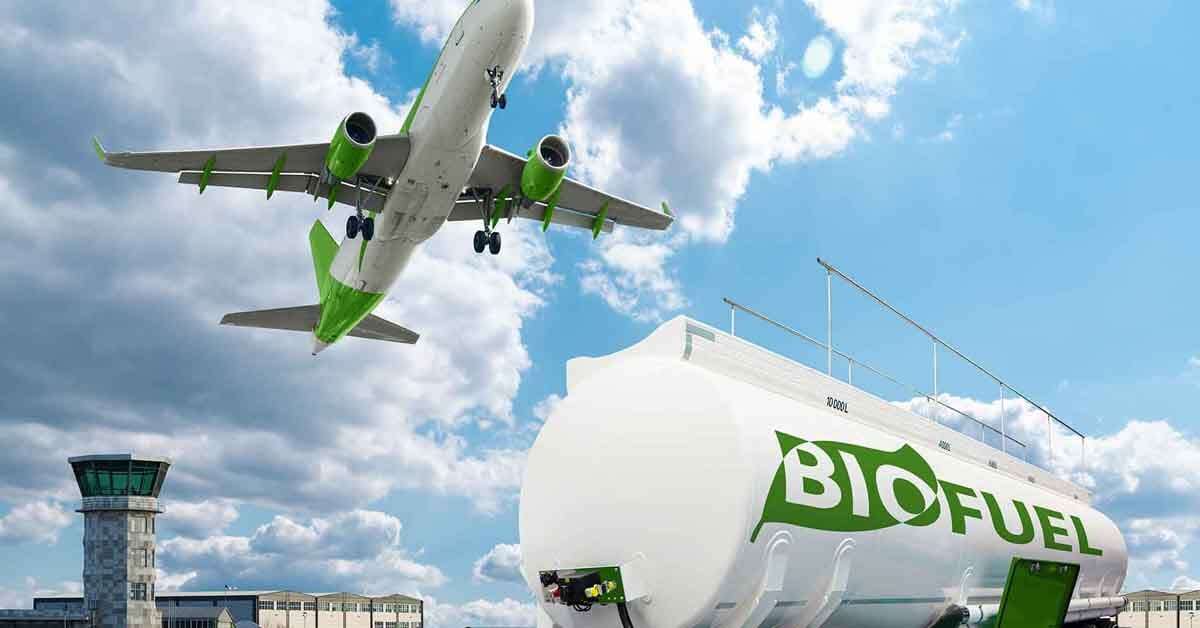4 min read
Inflation Reduction Act & Sustainable Aviation Fuels: Come Fly With Me?
 Larry Sullivan
:
Apr 4, 2023 12:00:00 AM
Larry Sullivan
:
Apr 4, 2023 12:00:00 AM

The title comes from a popular song composed by Jimmy Van Heusen (lyrics by Sammy Cahn) that was written for the inimitable Frank Sinatra in 1958. It was a wildly popular song of the time that was eponymous with the album as well as the arrival of the exciting age of jet aircraft travel.
Transnational jet travel has been the norm for 60+ years, and America now stands poised to usher in a new era defined by resource awareness and environmental stewardship. To wit, the Inflation Reduction Act (IRA) is a fitting piece of new legislation representative of the shift in modern thinking about the treatment of our natural resources, including provisions for updating guidance around energy usage that will improve carbon emissions and help to mitigate the impacts of climate change.
One such means unique to the aviation sector is the category of Sustainable Aviation Fuel (SAF), which is a broad-based segment of biofuels used to power aircraft that has similar properties to conventional jet fuel, but with a smaller carbon footprint. Depending on the feedstock and technologies used to produce it, SAF can reduce lifecycle greenhouse gas (GHG) emissions dramatically compared to conventional jet fuel. SAF’s lower carbon intensity makes it an important solution for reducing aviation GHGs, which make up roughly 8% of US transportation GHG emissions, according to the U.S. Environmental Protection Agency.
Recent SAF History
In 2020, the Biden Administration ran on a hardline stance against expanding fossil energy use and production. In the aviation sector alone, the Administration issued a “Grand Challenge” of incorporating 3 billion gallons of SAF into the aviation fuel mix by 2030 (the US and DOD currently use about 23 billion gallons of aviation fuel per year).
To put this fuel segment into perspective, the US annually uses:
- 123 billion gallons of gasoline
- 15 billion gallons of ethanol
- 64 billion gallons of diesel
- 4 billion gallons of biodiesel/renewable diesel
It’s an ambitious target, to be sure. However, there are currently only 300 million gallons of SAF used worldwide. Assuming the US and DOD reach demand for 27 billion gallons of jet fuel by 2030 and need 3 billion of SAF to make the Biden target, the likelihood of achieving that number seems virtually impossible.
Potential for SAF Via the IRA
As it stands now, the most noteworthy piece of the IRA for Sustainable Aviation Fuels is that the bill allows for an income tax credit for blending SAF into regular jet fuels, or “Jet A,” in US airports. This is a remarkable change in policy, as it enables airlines to claim tax credits parallel to the other road transportation fuel companies, users, and blenders of fuels.
To achieve this, the bill includes two important incentives for SAF producers:
- The first is a $1.25 per-gallon credit available for each gallon of SAF sold as part of a qualified fuel mixture if the SAF has a demonstrated lifecycle GHG reduction of at least 50% compared to conventional jet fuel. The credit increases to a maximum of $1.75 per gallon in one cent per-gallon increments based upon the performance of the feedstocks and processing towards lowering the Carbon Intensity (CI) of the fuel.
- The second is a tax credit for producers of general low-carbon fuels that can be used in aviation. This credit also will offer a $1.75 a gallon rebate for a 100% emissions reduction compared with fossil fuels.
However, there is a catch. The first credit will be available in 2023 and expires at the end of 2024, and the fuel must be produced in the USA and not imported. The second credit starts in 2025 and expires at the end of 2027. As Canary Media recently noted, this might not pose a challenge for existing SAF producers who primarily use hydroprocessed esters and fatty acids as feedstocks, but adoption of SAF at scale will require a lot more than fast food waste/grease.
In order for SAF to scale, producers will need to develop new methods for making fuel from new materials. Building and operating a first-of-a-kind refinery at commercial scale will likely take more than five years’ time, said Nik Pavlenko, who leads the fuels program at the International Council on Clean Transportation in Washington, D.C. ‘It’s quite possible that [a new refinery] won’t even produce its very first gallon of fuel before this tax credit is already phased out,’ he said. Whether for conventional or novel types of SAF, the tax credit ‘won’t do very much to support SAF production at all.’
The IRA also establishes incentives for other clean fuels, clean hydrogen, and renewable diesel and biodiesel. Related items of particular interest to the biofuels and bioenergy industries include:
- The Clean Fuel Production Tax Credit (PTC), a technology-neutral tax credit available for the production of low-emissions transportation fuels, which need to be approximately 40% cleaner than diesel to qualify.
- Section 45V PTC for clean hydrogen produced at qualified facilities, which (depending on the specific project) could range from $0.12 per Kg to $3 per Kg.
- For biodiesel and renewable diesel, the $1 per gallon blends tax credit will be extended before sunsetting in 2027. In the past, these excise tax credits expired and, after 2-3 years, were reinstated retroactively so the industry adjusted to holding them on the balance sheets shared between producers and buyers, jobbers, traders, and obligated parties.
- $500 million to support the development of biofuel infrastructure, including infrastructure improvements for blending, storing, supplying or distribution, and installing, retrofitting or upgrading fuel dispensers to supply higher blends of biofuels.
- An estimated $18 billion in support of “climate-smart agriculture,” which could benefit biofuels producers through the production of renewable feedstocks.
So, is this a big deal for SAF and other biofuels producers in the US? Based on previous political lip service to the broad biofuels segment, I remain cautiously optimistic. On paper, it does put SAF on some degree of parity with road diesel fuels. However, road fuels are subject to state and federal excise taxes, which is not the case with aviation fuels. Aviation fuels feature state-level sales taxes that vary, and there is no federal excise tax - unlike road fuels. Nevertheless, there are exemptions to the sales and use taxes for commercial airlines, military, and commercial testing of aircraft.
It is expected that the new IRA tax abatement will be used to offset airline corporation taxes as an income tax credit, though much needs to be determined about how airlines will actually be using these tax credits. Currently, the excise tax credit of $1 per gallon goes directly to the bottom line of the income or revenue of producers and users, which is also extended to the end of 2026. Income taxes generally are not considered on the revenue part of a statement; rather, these taxes are used above the bottom line to offset income tax exposure on a dollar-for-dollar basis.
Like all economies and the markets that serve them, a “show me the money” approach is the only way to promote innovation that is ultimately sustainable… and affordable. The changes inherent to the IRA feature significant monetary incentives to produce and use SAF in the US. However, unlike the RFS mandates to blend ethanol and gasoline, the IRA includes NO mandate to blend SAF and traditional aviation fuel.
From an ESG strategy, the IRA does provide the aviation sector with some level of incentive and an opportunity to begin “decarbonizing” the industry with SAF. In this light, it is an incremental step in the right direction.





